Western Slope Access Alerts
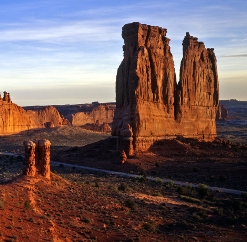 Two access issues have popped up recently that we wanted to help spread the word about. The first is a little farther afield, in Moab, Utah, at Arches National Park. They are developing a climbing and canyoneering management plan that will take into account things like fixed anchors, permits for new routes, access trails, resource protection, group size and commercial guiding.
Two access issues have popped up recently that we wanted to help spread the word about. The first is a little farther afield, in Moab, Utah, at Arches National Park. They are developing a climbing and canyoneering management plan that will take into account things like fixed anchors, permits for new routes, access trails, resource protection, group size and commercial guiding.
The Access Fund has setup a simple and easy way to send them your thoughts, you can access it here on their website. Take a minute and let the Park Service know if you value climbing in this magical place. Today is the last day to submit comments so don’t miss out on the chance to be a part of the decision process.
Closer to home, Diana DeGette is pushing to get a wilderness bill passed this fall that includes the Assignation Ridge and Thompson Creek areas. This is completely different than the Hidden Gems campaign, which has a much longer road ahead of them. DeGette has been working on a wilderness bill for eleven years, and she feels the time is ripe to get this piece passed this fall.
The Assignation Ridge/Thompson Creek area is a legitimate swath of pristine land that deserves wilderness protection. However, a couple of important local climbing areas lie just within the boundaries and this designation would exclude the use of power drills to both safely maintain existing routes and develop new ones. The main areas of concern are Thompson Creek, the Narrows, Redstein and Coal Creek. We met with her and her staffers to explain our concerns and they seemed willing to work out a compromise, which ideally for us would be excluding these cliffs from the wilderness area.
You can send in your comments regarding this issue via this form on their website.
As with all these issues, the more we let our voices be heard, the more legitimate we become as a user group, so please take the time to send in comments. And to keep it simple, we’ve included a sample letter below that you can cut and paste into the comment form on DeGette’s website, or modify as you see fit:
To Whome it May Concern,
I write with concern for the preservation of climbing opportunities in the Assignation Ridge/Thompson Creek area.
One of the big reasons people enjoy climbing is the time we get to spend outside, pursuing our passion in some of the most breathtaking scenery on the planet. Protection of the natural environment has always been a high priority for Roaring Fork Valley climbers, who have been using low impact techniques since the 1950s. Climbing activity goes nearly unnoticed aside from a few locations right off roads, such as Independence Pass, where it has even become a tourist attraction. When the climbers are not practicing their craft, it is hard to tell that people have passed over the rock above or the land below.
Many different types of anchors are used by climbers to protect themselves on the climbs, including natural anchors (slings around rocks or trees), passive and mechanical chocks (devices that are set into cracks and removed after use), and fixed anchors (pitons–metal spikes driven into cracks–and bolts, both left in place). Climbers have relied on fixed anchors to make rock climbs safer for over 50 years. In western Colorado, the nature of much of the rock, with its absence of natural cracks, dictates fixed protection, including bolts, be used to safely ascend cliffs. Bolts are most efficiently and safely installed by using a mechanized power drill. Without the ability to use this tool, it becomes extremely difficult, if not impossible, to safely maintain existing routes, and the potential to develop new climbs is severely limited.
Given these conditions, I was concerned when I learned of the Assignation Ridge wilderness proposal, as many of our current climbing areas, as well as potential new climbs, were within the proposed wilderness boundaries, which would outlaw the use of mechanized power drills.
The areas that are important to climbers which would be affected by this bill include the Narrows, Redstein, Coal Creek and Thompson Creek, which, despite the unfounded fears of the BLM, does not have the potential to become a destination crag, but rather will remain a great spot for locals.
The cliffs in question tend to lie close to road and hardly qualify for what many would consider a “wilderness” setting. By adjusting the boundary lines, the cliffs I am concerned about could be excluded, which will allow climbers to continue to maintain the safety of the climbs, and give future generations the ability to seek out new challenges, while still keeping the majority of the wilderness area intact.
Additionally, adjusting the proposed boundaries would accomplish a number of things:
1.Maintain climbing resources that has been valued by locals and visiting climbers for many years. It has been well taken care of by the climbing community.
2.Visiting climbers contribute to the local economy, including several climbing stores and two guide services. Ouray, Colorado is a good example of how climber groups working with local business and government entities can bring strong economic benefits to a town without compromising its environmental values.
3.Climbing terrain tends to be too steep for extraction or other high impact commercial uses, so limiting wilderness in this area presents little risk to forest lands.
4.Climbing access could be preserved in a way that doesn’t compromise the wild elements of these areas, while still expanding the wilderness significantly from current boundaries.
With the few minor exceptions outlined here, I support wilderness designation for the Assignation Ridge/Thompson Creek area, and welcome the preservation of those wild places.
Sincerely,
6 Responses to Western Slope Access Alerts
Bulldog Creek Dog Walk (IV WI 4+)
Hayden Carpenter and Tom Bohanon recently repeated an obscure ice climb on the south side of Mt Sopris. Given a brief mention in Jack Robert’s ice guide, Bulldog Creek Walk is described as being 100 meters of WI 4. What they found was seven pitches of ice in a remote setting that makes for one […]
Connect with Us








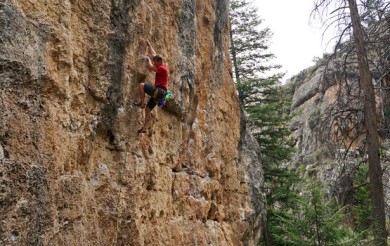
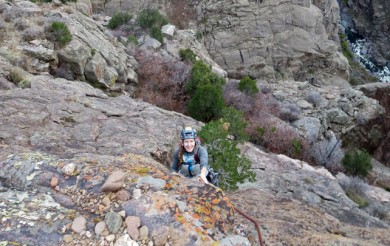
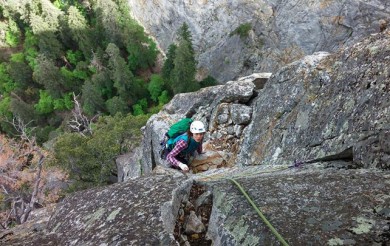
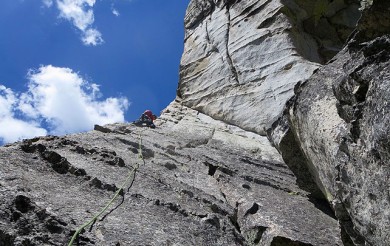



Get out your hand drill and stop complaining. This land is going to be essentially preserved forever, and you’re complaining about not being able to use a power drill???
You get an exception for climbing drills, and next ranchers are getting 4 wheelers to round up their cows.
Just deal with it and be happy the land is protected.
@Jestep – I couldn’t agree with you more, when it comes to actual wilderness. And that’s why we support the wilderness, but want to see these roadside crags that are no more than 10 minutes from a road, with hundreds of bolts in them, excluded. They don’t fit the bill of being “wilderness,” and it would take an army of handrillers to replace the bolts when they need to be upgraded in 30 to 50 years.
And ranchers do get exceptions in wilderness areas, as do fire fighters, search and rescue, and many others. Wilderness is not as pure as many would like to believe, unfortunately.
Thanks, BJ, for bringing this to my attention. I went and added comments at their site.
I spoke with Diana last week when she was in Glenwood. Their plan already had some exclusions of the climbing areas incorperated into it. The only restriction with the other areas that were still within the wilderness boundaries was the use of power devices. On that issue I agree with the comments above.
For us to preserve special lands within our country and prevent the developement and devastation of some of our favorite spots, it will take some compromise from everyone involved. It also means that not everyone will even be able to access all of these places, such as those with disabilities. Be thankful that we have people in positions of authority that have the sense to get these projects done, and i urge you to compromise when the greater good is being served.
Free pro has come a long way. Lets use it, or at least suck it up and place protection using our own power.
@Mike – Most climbers in the RFV feel like this IS a good compromise, preserving our crags for future access while keeping 99% of the proposed wilderness area intact.
Also, for more examples of all the loopholes allowed in wilderness, check out an editorial by Jeff Jackson in Rock and Ice magazine: http://rockandice.com/articles/editors-note/article/317-wild-and-free
Mike – “suck it up”, that is right up there with Jesteps “just deal with it”, those are your solutions, thanks for sharing.
These “wilderness” proposals would eliminate, to some degree, both motorized and non-motorized activities that have a historical precedent. Personally I disagree with that type of move. Who are you to say that removing these uses is what is best? Do you have that authority?
You talk about “the greater good”. Are you the judge of what the greater good is for me or others? What if I think the greater good is that we leave these lands as they are? Are you willing to compromise for that greater good? Or is your “greater good” the only valid “greater good”?
I am happy to use a hand drill in places that historically require that; existing wilderness, national parks, etc.. However the crags in question reside in non-wilderness and hence were put in with power drills where bolts were necessary. They should be allowed to be upgraded/maintained in the same manner, the greater good I say.
I have developed some routes and always look for safe/quality gear placements before drilling. Even with the gear out there today, there are limitations. I think the crag/route developers in this Valley are very sensitive when it comes to bolting and do not bolt to excess.